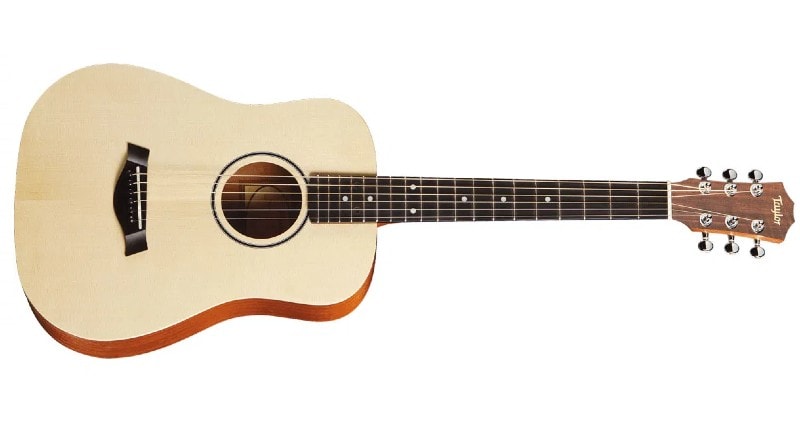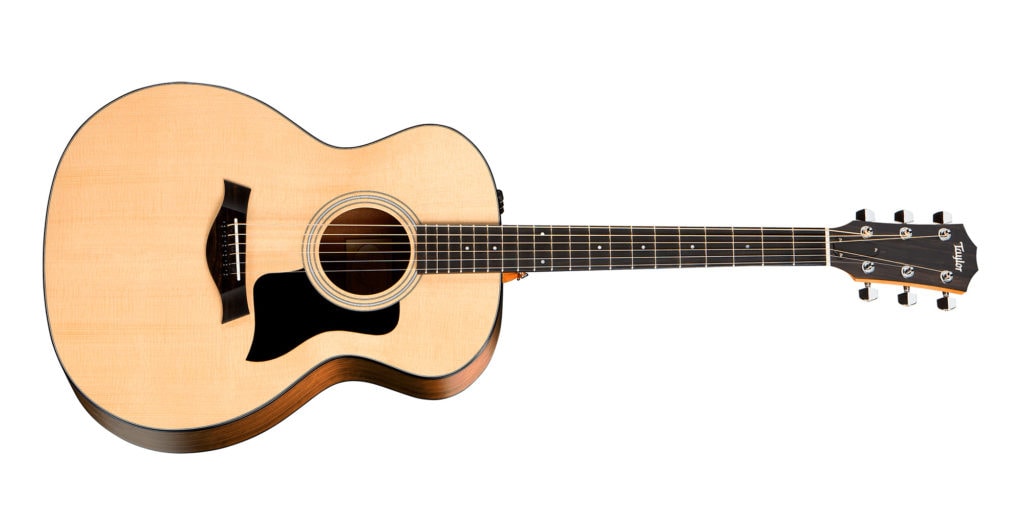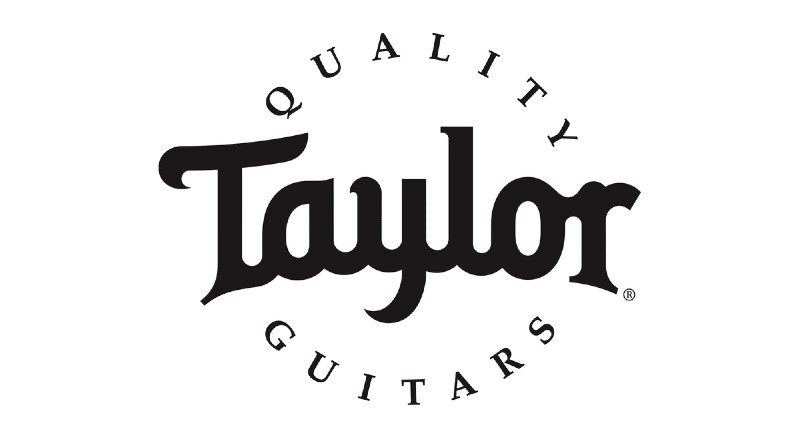Taylor is one of the most popular acoustic guitar brands on the planet right now. They’re well known for their bright and clear tones, with beautifully rich upper mids. The manufacturing technique as well as the choice of tone woods has a lot to do with these signature tones, as do the strings that Taylor equips on each of their guitars.
Premium brands like Taylor make sure that the best of the best components go into each of their models. To ensure their players retain the ability to keep the guitar sounding as good (or better) than the day it left the shop floor, they share details of the parts that go into them – including strings.
The exact strings that Taylor equips their guitars with vary between models, but on all steel-strung guitars since 1999, Elixir has been the brand of choice. If you play a nylon-strung Taylor, it will be strung with D’Addarios.
The below table shows exactly which strings you need for your Taylor to keep it within factory specs:
| Grand Auditorium | Elixir Light Gauge Phosphor Bronze NANOWEB (.012-.053) |
| Grand Concert | |
| GT | |
| Academy Series | |
| Big Baby Taylor | |
| Baby Taylor | |
| Grand Symphony V Class |
| Grand Orchestra | Elixir Medium Gauge Phosphor Bronze NANOWEB (.013-.056) |
| Grand Pacific | |
| Dreadnought | |
| Grand Symphony (pre-2019) | |
| GS Mini |
| 12 String Models | Elixir Phosphor Bronze NANOWEB Light Gauge (.010 -.047) |
| Nylon String Models | D’Addario (EJ46FF) Pro-Arté Carbon, Dynacore Basses, Hard Tension |
As you can see, even the lowest priced Taylor guitars are equipped with high-end strings, which you may or may not want to continue to use. Elixir strings are fantastic, but they can be costly. If you’re trying to be budget-conscious, you may want to experiment with other brands.
Elixir strings are also coated. As good as the NANOWEB coating is, the feel of these strings isn’t for everybody. So if you prefer an uncoated string, restringing with another style might help you achieve the sound you’re looking for.
It’s also worth noting that up until 2014, Taylor exclusively used 80/20 bronze strings. Ever since they’ve equipped their guitars with phosphor bronze. Getting a more ‘old school’ Taylor sound may require switching out to an 80/20 string set.
Contents
How to Choose Strings for your Taylor Guitar

If you have decided you’d like to mix it up and try something other than the factory spec strings, follow this guidance to assist in choosing:
What Body Shape Do You Play?
Taylor guitars come in all shapes and sizes, and the specific model you’ve got should influence the strings you choose. The Baby Taylor models, for example, are small-bodied and perform best with lighter gauge strings. Similarly a grand auditorium guitar like our favorite, the Taylor 214CE, benefits from lighter strings. On the other hand, a Dreadnought or Grand Orchestra, two of Taylor’s biggest guitar models, will perform best with medium to heavy gauge strings.
What is Your Playing Style?
The style of music you play will also dictate the type of strings that suit your Taylor guitar best. If you play rhythm and strum hard, you should stick with medium gauge. They will project better than lighter strings and will stand up better to the harder style of play.
Fingerstyle players will benefit from light gauge strings, which are easier on the fingers and have a more delicate tone. If you’re really into this style and don’t play much of anything else, you may even want to consider a set of silk and steel strings. Silk and steel strings are warm and rich, they’re easy on the fingers, and perfect for finger picking.
What Tone Are You Looking For?
Especially with acoustics, the strings that are installed have a huge impact on the overall sound of the guitar. So if you’ve got a specific tone in mind, consider the following:
If you want bright, crisp tones, 80/20 bronze are the way to go. Of course, the downside is they typically dull much faster than most other types of string.
Phosphor bronze strings offer bright tones, although a little more mid-focused than 80/20. The phosphor content in the alloy helps to slow down the corrosion process, which is one of the leading causes of tone loss.
Aluminum bronze strings are widely regarded for their excellent bass response. So if you’re looking for something with emphasis on the lows, these are a good choice. Like phosphor bronze, aluminum bronze strings incorporate a corrosion resistant metal into the alloy, which helps to slow down the rate at which the strings dull.
Best Replacement Taylor Strings

The stock sound is probably what made you fall in love with your Taylor in the first place, so in the event that keeping things as the manufacturer intended is what you’re looking for, stick with the factory spec.
Once you’ve established which strings your guitar came with from the above table, you can pick up a replacement set from Sweetwater. If your guitar takes the light gauge strings, check out the Elixir Phosphor Bronze NANOWEB Light Gauge.
If your guitar calls for a medium gauge, the Elixir Phospor Bronze NANOWEB Medium gauge strings are what you need. For Taylor 12-string models, check out the Elixir Phosphor Bronze NANOWEB Light strings.
Finally, if your Taylor is a classical model with nylon strings, you’ll need D’Addario (EJ46FF) Pro-Arté Carbon, Dynacore Basses, Hard Tension if you want a like-for-like replacement.
If you’re planning to try something new, I definitely recommend giving the Ernie Ball Earthwood 80/20 Bronze strings if you like uncoated strings. They have a wonderful bright tone and are some of the most affordable strings around.
If 80/20 isn’t your thing and you want some extra bass response, Ernie Ball Aluminum Bronze strings are another great choice.
Final Thoughts
Fortunately, Taylor guitars come equipped with some of the best strings in the business. In fact, many players choose to upgrade their stock strings to Elixirs at the first opportunity.
Coated strings like Elixirs are comfortable to play and sound great, but they aren’t without their flaws. This is why it’s entirely conceivable that some Taylor players might want to switch things up. If you want more info on the best acoustic strings, check out our guide to the 7 best acoustic guitar strings.
Check out these other articles you might like:
- Our guides for the strings on Fender, Yamaha, Gretsch, Martin and Epiphone LP guitars
- How to Restring an Acoustic Guitar
- Our Guide to the Best Electric Guitar Strings
- Flatwound vs Roundwound Strings – Key Differences
- How to Remember the Names of Each Guitar String


